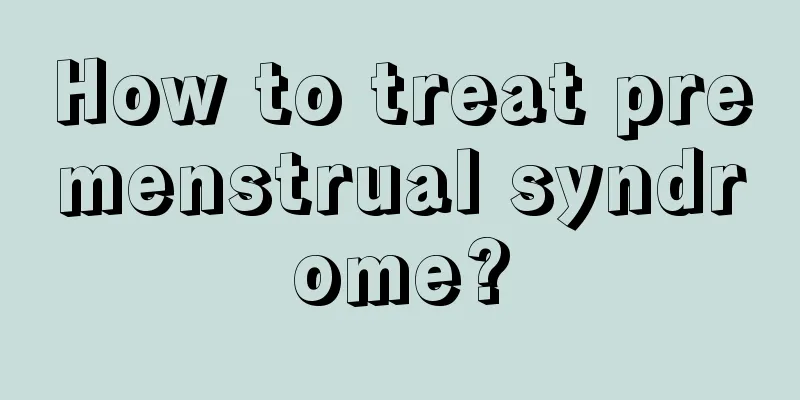How to treat premenstrual syndrome?

|
In fact, many women have mild PMS, which is not difficult to treat, and if it is not particularly serious, you can choose not to treat it. Because the symptoms of premenstrual syndrome will end with the end of the menstrual period, it only appears in the first few days of the period and will not cause any major problems. However, some people's condition is more serious and the symptoms do not end with the menstrual period, so they need treatment. Treatment methods 1. Anti-anxiety drugs/non-selective serotonin reuptake inhibitors: Non-selective serotonin reuptake inhibitors/antidepressants and antianxiety drugs can relieve premenstrual syndrome more significantly than placebo, but some women discontinue treatment due to side effects of the drugs. Benefits: Most studies suggest that anxiolytics/NSRIs provide significant relief for one or more of the symptoms. Harms: Adverse effects such as drowsiness, nausea, anxiety, and headaches affected patient compliance in most trials. Alprazolam causes drowsiness and less frequent nausea and headache. Common side effects of antidepressants include dry mouth, fatigue, nausea, and dizziness. 2 Bromocriptine: The main side effect of bromocriptine is nausea. 3Massage therapy: There is insufficient evidence to support the effectiveness of massage therapy in treating PMS in women. 4 Cognitive behavioral therapy: Studies have shown that cognitive behavioral therapy can significantly relieve premenstrual symptoms compared with the control group. Relaxation, walking activities, self-monitoring, education, cooperation skills, etc. can relieve women's symptoms. This therapy has medium- and long-term treatment benefits, and cognitive behavioral therapy may be more suitable for more active patients. 5 Danazol: Danazol seems to be very effective in relieving premenstrual symptoms, and many women who persist in treatment have some symptoms cured by danazol. 6 Dietary supplementation: Calcium supplementation can significantly relieve overall symptoms compared to placebo, including breast tenderness, edema, dizziness, and abdominal cramping pain. There are as many as twenty ways to treat premenstrual syndrome, including general massage relaxation, medication, and surgery. Treatment will vary depending on the severity of your condition and your tolerance. Don’t worry too much about premenstrual syndrome, because severe cases are rare and most are within acceptable levels. |
<<: How to treat female constipation
>>: How to deal with menstrual bloating
Recommend
Why does the cervix bleed?
The female reproductive system is not only very f...
What does it mean when a pregnancy test shows negative
The use of pregnancy test sticks can detect wheth...
Can I eat cherries during the confinement period?
During the confinement period, pregnant women usu...
Pregnant woman vomits and her throat is burning
Women often have stronger reactions in the early ...
Do you need to expose the homemade salted duck eggs to the sun after wrapping them? When is the best time to expose the salted duck eggs to the sun?
We all know that salted duck eggs are a popular w...
What is the normal blood hcg value?
HCG is a glycoprotein produced by embryonic troph...
How to remove the saltiness of mustard tuber? Can mustard tuber and black fungus be eaten together?
Zhacai is made from fresh mustard greens. It is n...
Endocrine disorders can cause amenorrhea
For the sake of their own health, women must deve...
Beware! Children's eyes are facing these "challenges" during the final exam season
"My child has been reviewing for the final e...
Can I have induced labor after a caesarean section?
I believe that many female friends prefer natural...
Can pregnant women have MRI scans?
There are many types of diseases that can be dete...
Can white radish and ginger soup cure cough? What kind of cough is suitable for salt-steamed oranges?
Cough is a common symptom of discomfort in winter...
Normal range of fat percentage for women
What is the standard body fat percentage for girl...
What to do if you have diarrhea during menstruation
We know that women’s bodies will become weaker du...

![[Medical Q&A] Is surgery necessary for liver cancer? The "new world" of ultrasound-guided interventional therapy?](/upload/images/67f11709a74ef.webp)







